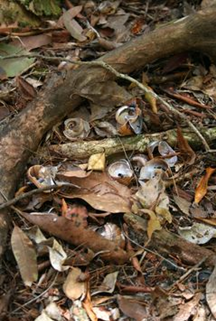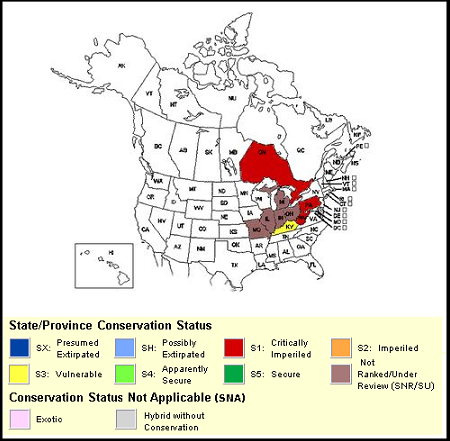Habitat
As the map demonstrates, Patera
pennsylvanica has been found in Pennsylvania, West Virginia,
Kentucky, Ohio, Indiana, Illinois, Missouri, Michigan and Ontario
(Encyclopedia of Life 2012). According to Jeffrey C. Nekola (2009)
the shell of P. pennsylvanica found in Ontario is very
similar to Mesodon mitchellianus,
meaning the finding in Ontario needs further study, particularly of
the genitalia, for a conclusion to be reached.
Patera pennsylvanica also reaches into Southern
Wisconsin (Nekola 2009).
According to the Global Biodiversity
Information Facility (GBIF), there are 175 different reports of this
species, 174 of them within the United States and only one in
Canada. This site even gives the coordinates,
county and state as well as provides a map pinpointing the location.
When searching through some of these reports, I found that
these snails were mainly found under leaf litter, grass or logs, and
sometimes they were found at the bases of bluffs (GBIF 2007).
Patera pennsylvanica may also be found in ravines or
wooded hillsides (Pilsbry 1940).
Di

